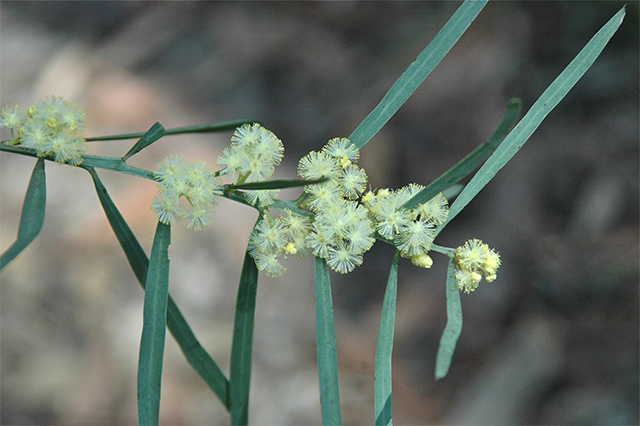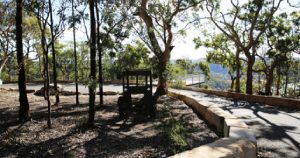When you visit your local bushland areas during summer and early autumn, there is one particular Wattle that is in flower. It is a pale yellow to cream coloured variety called Flax-leafed Wattle (Acacia linifolia). It can be found extensively where conditions suit, as it prefers the more sandy soils in open forest and is often found near rocky outcrops alongside bush tracks.
This plant is generally small and slender, ranging from having a graceful drooping, habit to being somewhat straggly, as can be seen in the adjacent images. Its height can vary from 1 to 4 metres depending upon its situation in the forest. Mostly, the flowers tend to cluster towards the ends of branches.
At times the perfume of this Wattle can be quite strong, but it is nowhere near the strength of the spring flowering varieties.

The sometimes overpowering perfume of the spring flowering wattles is most noticeable where there are many growing in close proximity to one another.
It is also interesting to observe the variations in flower structure and colour of this wattle as they develop and eventually produce flat, oblong seed pods.
This plant can be grown in home gardens as it responds to careful pruning to form a more compact shrub. It can even have a second flower flush in early winter.
There are numerous other small, almost insignificant, wattles that can be found in flower, from late summer through winter, growing in a similar habitat to this month’s featured plant. Throughout the many bushland reserves of the Hills Shire, one of the large Wattle family can be readily found in bloom somewhere. – Lachlan Turner








